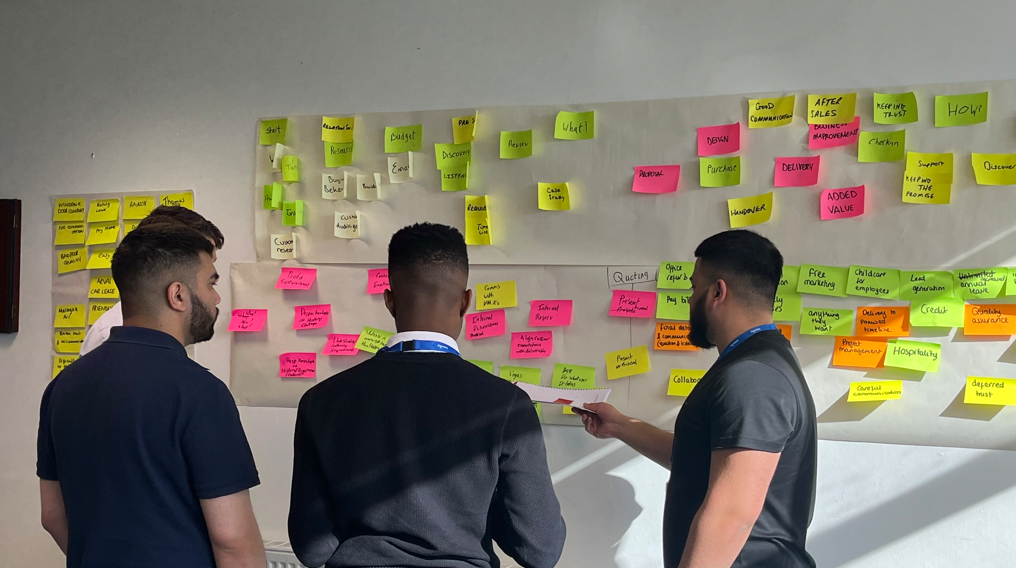I was in my native county – Lancashire – earlier this month, delivering my keynote on the Psychology of Consumer Behaviour. Hey, wake up at the back! This is a bit different, though I admit that there’s a couple of pictures of a brain.
Anyway, part of my keynote examines where customers form their first impressions. We all do it, though with hardly any conscious thought. And where we’re the customer, it affects our buying decisions. More on that later. For now, let’s focus on where first impressions are formed, because it’s not where most folk realise.
To prove this, I took along a lovely office-made board that has the customer journey mapped out at a high level. The challenge was for business-owners to “pin the customer on the journey.” Not the cleverest of names, but it did what it said on the tin. Really easy: put a sticker somewhere on the journey, indicating where the customer’s first impressions are formed. And what a range of answers, with a chronological gap of over a month between the earliest and latest points! How can that be?
It seems that there’s some confusion over just how early we form impressions of what it’ll be like to be a customer of any given business. Imagine if you’re in the market for a new car. If you’ve bought one before, somewhere in your brain you’re forming ideas of what it’ll be like going through the process again. If you’ve never bought a car, you’ll still form ideas based on imagined experience. In either case, you’re forming impressions of what it’ll be like as the customer. If you’ve had great experience with a dealer or had one recommended to you, then there’ll be a positive association. If you’ve only ever had a tough time or been told that it’s an unpleasant experience, then this will affect your impression.
All this time, your brain is forming impressions while the hapless car dealership is blissfully unaware of your intentions. What can they possibly do to influence your impressions when they’ve not even met you?
I know I’ve picked on the motor trade, but it could be any industry. For what it’s worth, I’ve only ever had good experiences of buying cars. Back to the plot…
Well as it turns out, there’s plenty that they can do. Here’s three examples:
- Build the reputation as the best dealership by consistently delivering exceptional customer service which in turn builds advocates for the business.
- Become the go-to authority for the local media on all matters relating to their industry; in other words, be the trusted advisor to the press.
- Hang out where their prospective customers hang out, listening to what they like and dislike about dealing with the industry, then sharing unbiased information that helps those prospective customers.
That’s just for starters – there’s so much more, all aimed at ensuring that when your would-be customers think about you, they’re forming positive first impressions. And if you want to know more and really understand why that’s important, you can wait for my next blog or give me a call.










